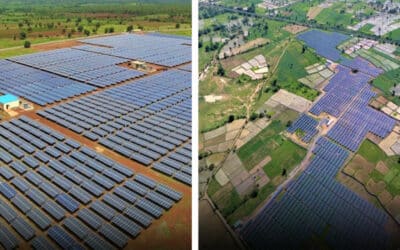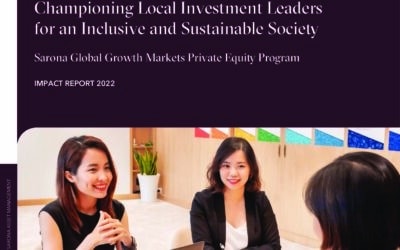As 2024 unfolds, the global economic environment continues to remain resilient, raising expectations for central bank easing in the upcoming quarters and increasing the probability of a relatively soft landing. While interest rates stay elevated, particularly across developed markets, the consensus holds that rates have peaked during this cycle. The disinflation trend continued, primarily driven by large EM economies at the global level, and the US among developed markets. Both headline and core inflation continued their declines from peak levels, albeit at varied rates, supported by declines in commodity prices and wages. However, escalating conflicts in the Middle East, Ukraine, and the Red Sea continue to threaten the downward inflation trend, potentially affecting the supply chain and commodity price. The threat from El Niño’s weather events in the Pacific Ocean, while projected to diminish by spring, remains a risk to food supplies. Additionally, property sector weakness in China, and in other countries, more protracted fiscal consolidation could weigh in on growth. The year is also expected to be one of the busiest electoral calendars, with voting taking place in countries accounting for over a third of EM GDP, as well as major economies in DMs, including the US. Against this backdrop, global growth is projected at 3.1% in 2024 and 3.2% in 2025, with the 2024 forecast 0.2% higher than prior estimates on account of greater resilience in the US and several large EMs, and greater fiscal support from China.
While the theme of resiliency continued, divergences in policy measures and growth outlook across EMs and DMs remain. Major DM central banks, including in the US and Europe, continue to hold rates at recent highs, as they seek clearer indications that inflation is heading towards its target. Conversely, EMs which have been frontrunning both the tightening and easing cycle drove on with rate cuts, with Brazil, Chile, Colombia, and Hungary all extending their loosening. A broadening is expected with Mexico and several Asian countries projected to ease rates later this year, while exceptions include Turkey and Russia where sticky inflation persists. Headline inflation was bolstered by a downward trajectory in food prices, particularly maize prices, fuelled by rising expectations for larger harvests in Brazil and Argentina, along with more competitive prices from Ukraine following the smooth running of the maritime trade route. This was supported by declines in wheat prices due to a stronger export pace from Russia, while barley, sorghum and international rice prices edged lower. Oil prices remain relatively stable despite rising geopolitical tensions. While core wage inflation has slowed in DMs, central banks seek further evidence of cooling labour markets.
Asia and the Pacific remain a dynamic region, with 4.7% growth expected in 2024, contributing to around two-thirds globally. In Southeast Asia, Indonesia, Vietnam, and the Philippines continued to experience positive growth rates in Q4, supported by resilient domestic demand, expanding investment and some improvement in exports of goods and services as key consumer markets in Europe and China started to ease. In South Asia, India’s growth for 2023 was upgraded from 6.3% to 6.7%, amid greater resilience in domestic demand, higher public infrastructure investment and a strengthening financial sector. In East Asia, China is expected to grow 5.2% in 2023, surpassing its annual target of 5%. Rising industrial production, bolstered by increased investment in the clean energy sector, provided resilience against a struggling property sector with declining home buyer sentiment and indebted developers, as well as weaker retail sales. In 2024, China is expected to implement a well-defined playbook of fiscal expansion to fund infrastructure investments to provide support for slower growth post-COVID.
Africa’s economic growth is expected to slow in 2023 and only partially recover in 2024. South Africa continues to face rolling power cuts constraining output, while Nigeria’s economy grew steadily in Q4 as oil output rises. Pressure on Kenya’s shilling eased after a recent bond issue alleviated default fears.
In LatAm, Brazil and Mexico have been more resilient with the former bolstered by bumper agricultural production, and latter benefitting from rising US demand. Argentina’s outlook is more uncertain with inflation exceeding 200%, however recent austerity measures by the new government alongside continued loan disbursements from the IMF are expected to provide relief.
The MSCI World Index regained strength, rising 11% in Q4, with the index up 24% in 2023. Markets exhibited their strongest performance since 2019, boosted by increased sentiment around US rate cuts, greater enthusiasm over artificial intelligence and dominance from the largest mega-cap technology companies. EM equities rose 8% in Q4, however they continue to underperform developed markets, largely weighed down by China, with the MSCI EM Index rising 10% for 2023. The US dollar index continued to trend lower from its peak in 2022, falling 3% in 2023, as easing expectations for 2024 trended higher, which is expected to support EM currencies.
Private markets continue to remain interesting, as investors maintain optimism around reducing interest rates. This could spur M&A activity and deal making, while liquidity options widen as IPO markets become more active again. In private equity, energy transition investments in infrastructure are expected to step up while in early-stage venture, climate-tech is also benefitting from the secular trend of decarbonisation. Co-investment opportunities are expected to increase despite a quieter deal market while the secondary market continues to hold strong owing to rising demand for liquidity. Private debt continues to benefit from higher interest rates and retreating underwriting banks, and continued to be a major source of private equity financings in 2023 as borrowers seek execution certainty. Against this setting, Sarona can play a catalytic role in building early-stage ecosystems, particularly in climate and gender verticals, in line with its EMIIF (Emerging Markets Impact Investment Fund) programme (recently rebranded to Australian Development Investments – ADI), as well as support more established private equity companies through its SGGM programmes.
With elections across the world in 2024, the results will determine direction for policy, guide economic reforms and fiscal trajectories, and bring potentially significant geopolitical and supply chain effects. While tensions between US and China-led blocs appear the new normal, elections in the US towards the end of the year could deepen strains with China, while the change in leadership in Taiwan, implies the threat of invasion still remains. Indonesia’s presumed president-elect brings a continuity agenda, pledging to resume business-friendly reforms including a focus on developing the commodities sector. There is a risk however that a nationalist approach could deter Chinese investments which has supported the metals and mining industry in recent years, notably nickel, which is critical for electric vehicle batteries. In India, the Prime Minister is seeking a third term in office which would likely set the scene for continued gradual reforms to sustain the country’s strong economic growth profile. In South Africa, there is a risk of worsening public finances if the current administration is forced to enter a coalition with the left-wing party. Overall, the outlook for EMs remains encouraging. As the economic cycle resets, private markets continue to offer value and choice for long-term investors, particularly in themes such as energy transition and information technology. Supportive factors for growth in Ems include continued disinflationary trends, earlier monetary tightening and easing by central banks, resilient domestic demand, and expansionary fiscal signalling by China. Global growth expectations for emerging markets remain higher than advanced economies (4.1% vs. 1.5% in 2024) and (4.2% to 1.8% in 2025) which is conducive for Sarona’s investment universe. Nevertheless, we remain particularly cautious around an escalation scenario in Gaza and the Middle East, prolonged conflict in Russia-Ukraine, the consequences from sticky core inflation, a further slowdown in DMs particularly the Eurozone, and election surprises which could heighten volatility for markets and have real economy implications.




